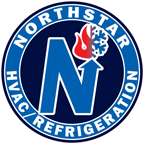How to Prepare Your Ice Rink Refrigeration System for Peak Performance
Written by Ed Rice
As the summer season approaches, ensuring your ice rink’s refrigeration system is operating at peak performance isn’t just smart—it’s essential. A well-maintained system ensures consistent ice quality, maximizes energy efficiency, and reduces the risk of costly downtime during the warmest months.
Whether you’re managing a municipal rink, a collegiate arena, or a professional facility, this week’s Northstar University blog outlines the steps you should take to get your ice rink refrigeration system ready for peak season.
Why Pre-Season Preparation Matters
Ice rink refrigeration systems work hard—often running 24/7 to maintain ideal ice temperatures. If your system is underperforming or neglected, you risk:
Uneven or soft ice surfaces
Equipment strain leading to mid-season failures
Excessive energy usage and utility costs
Shortened equipment life expectancy
Potential safety concerns for skaters and staff
Preparing in advance helps your facility avoid emergency repairs and ensures a smooth, uninterrupted skating season.
Pre-Season Checklist for Ice Rink Refrigeration
Schedule a Full System Inspection
Before the season begins, schedule a comprehensive inspection of your entire refrigeration system. A qualified technician should assess:
Compressors, evaporators, and condensers
Pumps, motors, and electrical components
Control systems and sensors
Heat exchangers and glycol flow
Suction pressures, head pressures, and temperature differentials
Tip: A baseline performance check helps you catch issues before they escalate under peak load.
Test and Treat Glycol
If your rink uses a secondary refrigerant loop (like glycol), check for:
Proper glycol concentration to prevent freezing or pump cavitation
Fluid condition (pH, clarity, presence of debris)
Flow rates and pump performance
Flushing and replacing degraded glycol can improve thermal performance and prevent damage to piping and heat exchangers.
Inspect and Clean Condensers and Evaporators
Dirty heat transfer surfaces reduce efficiency and can cause your system to run longer than necessary.
Clean condenser coils to ensure proper heat rejection
Inspect evaporators and headers for leaks, frost buildup, or corrosion
Check for any refrigerant leaks and address immediately
Well-maintained coils and surfaces mean better energy performance and more consistent ice conditions.
Check Controls and Safety Devices
Make sure all controls are calibrated and responding correctly:
Thermostats, pressure switches, and temperature sensors
Alarm systems, safety cutoffs, and emergency shutdown devices
Ensure your ammonia or CO₂ detection systems are tested and working properly
Regular control testing reduces risk and supports compliance with IIAR and ASHRAE standards.
Inspect Ventilation and Detection Systems
Proper ventilation and gas detection are critical in ice rinks, especially those using ammonia (R-717) or CO₂ (R-744).
Confirm your ventilation system is operational and configured for emergency scenarios
Test gas detection sensors and verify calibration
Review the function of emergency exhaust fans and makeup air units
Ventilation and detection issues are safety-critical—never delay these inspections.
Inventory Spare Parts and Service Materials
Peak season isn’t the time to wait on long lead-time parts. Review your inventory of:
Compressors or pump components
Motor starters, contactors, and relays
Gaskets, valves, and refrigerant
PPE, refrigerant hoses, and service tools
A spare parts strategy can be the difference between a 2-hour repair and a 3-day shutdown.
Review System Logs and Performance Trends
Look at your refrigeration system's logs from the previous season:
Were there performance drops during peak occupancy?
Any recurring alarms, pressure anomalies, or maintenance tickets?
Were defrost cycles consistent and effective?
Understanding how your system performed last season will help you make data-driven decisions this season.
Partnering with Northstar for Ice Rink Success
At Northstar Refrigeration, we specialize in designing, servicing, and optimizing refrigeration systems for ice arenas across the Northeast. Our team can help you:
Perform pre-season inspections
Provide glycol testing and treatment
Clean and service heat exchangers
Verify ammonia and CO₂ compliance
Create custom preventative maintenance programs
Respond 24/7 in case of emergency
Call us today at (508) 888-3692 to schedule your ice rink system tune-up before the first skate hits the ice!
Final Thoughts
An efficient, reliable refrigeration system is the foundation of a successful ice season. With the right maintenance and planning, you can extend the life of your equipment, reduce energy costs, and deliver the safe, high-quality ice surface your skaters expect.
Don’t wait for the heat to test your system—prepare now with Northstar Refrigeration and skate into the summer with confidence.
(508) 888-3692
www.northstarhvacr.com


